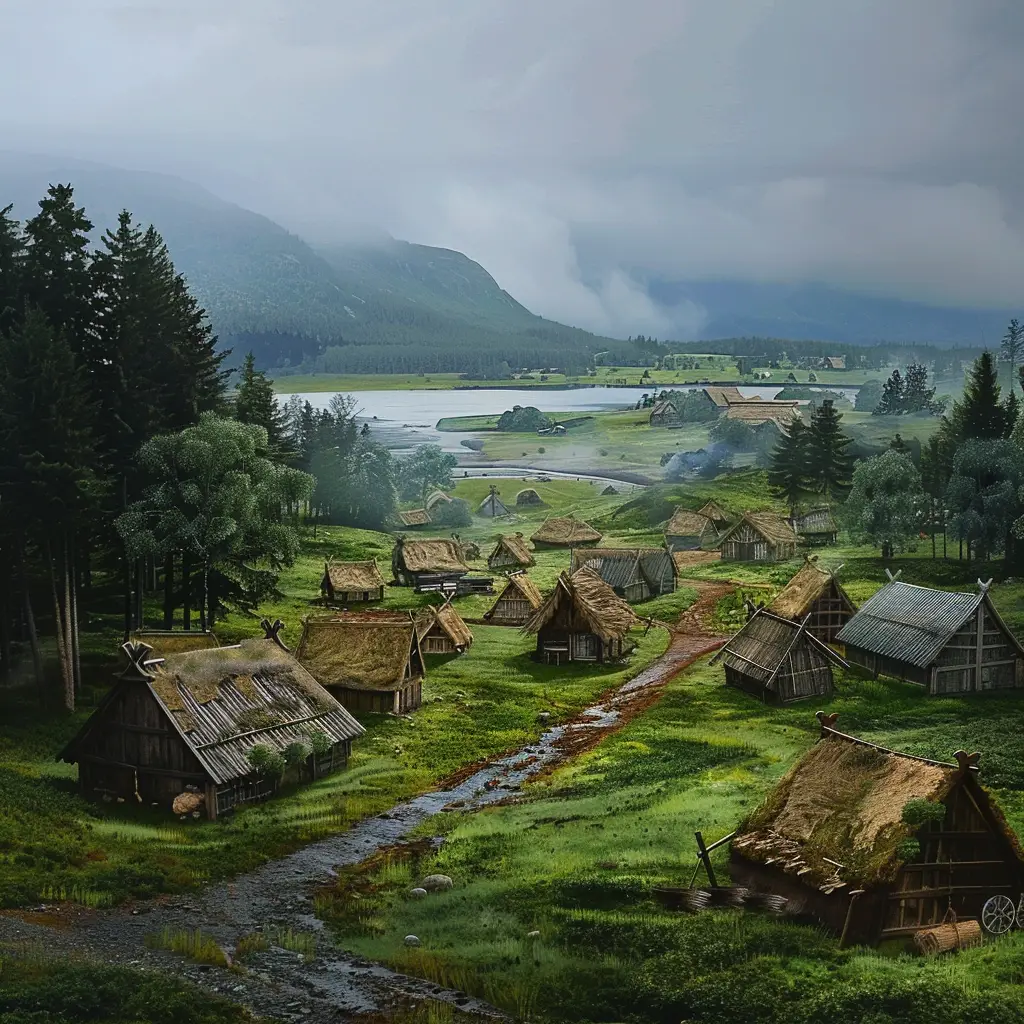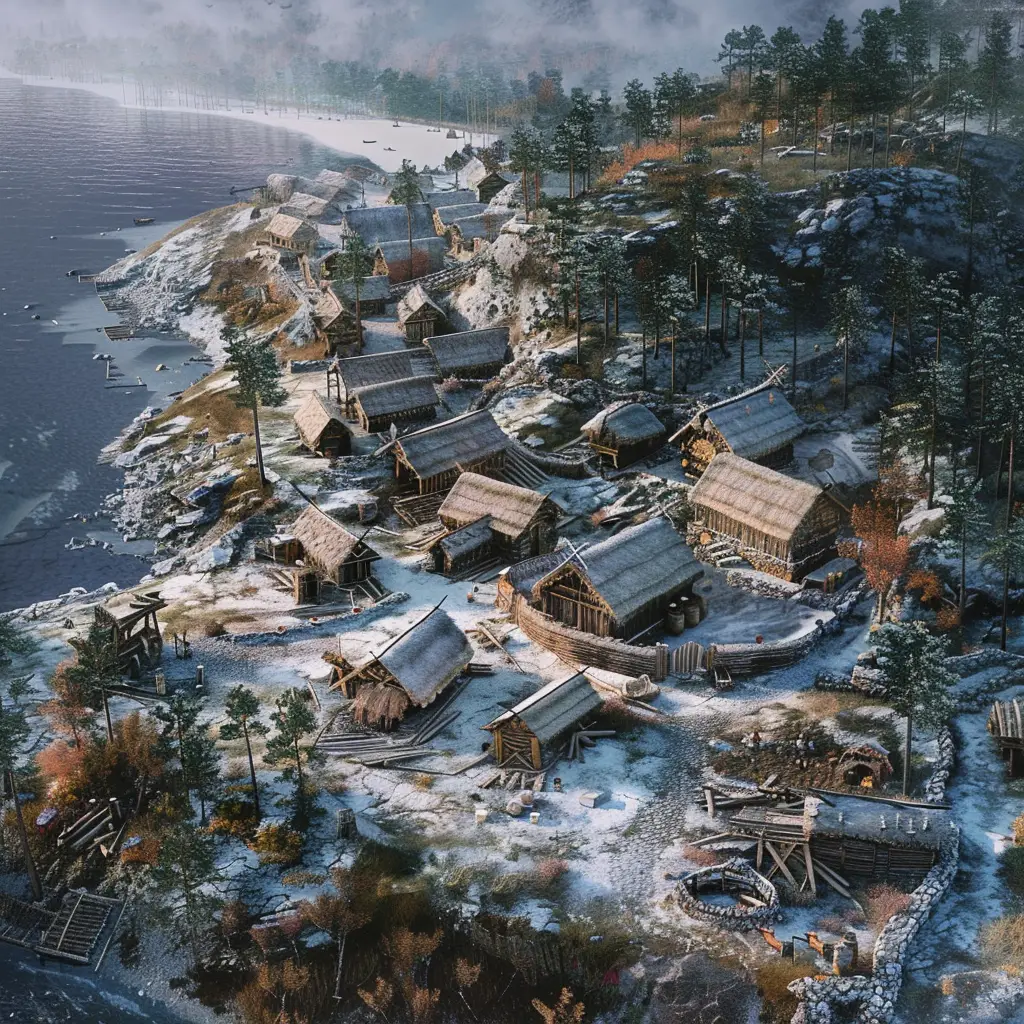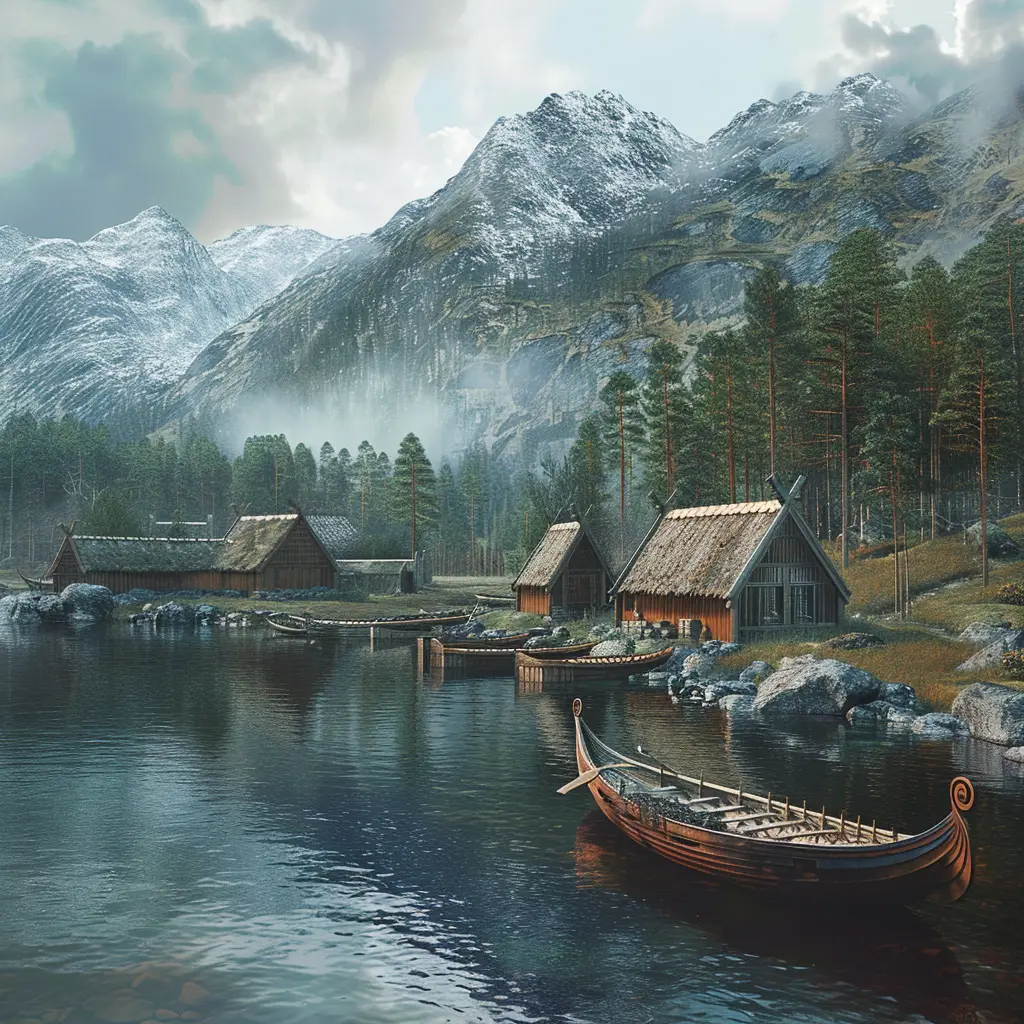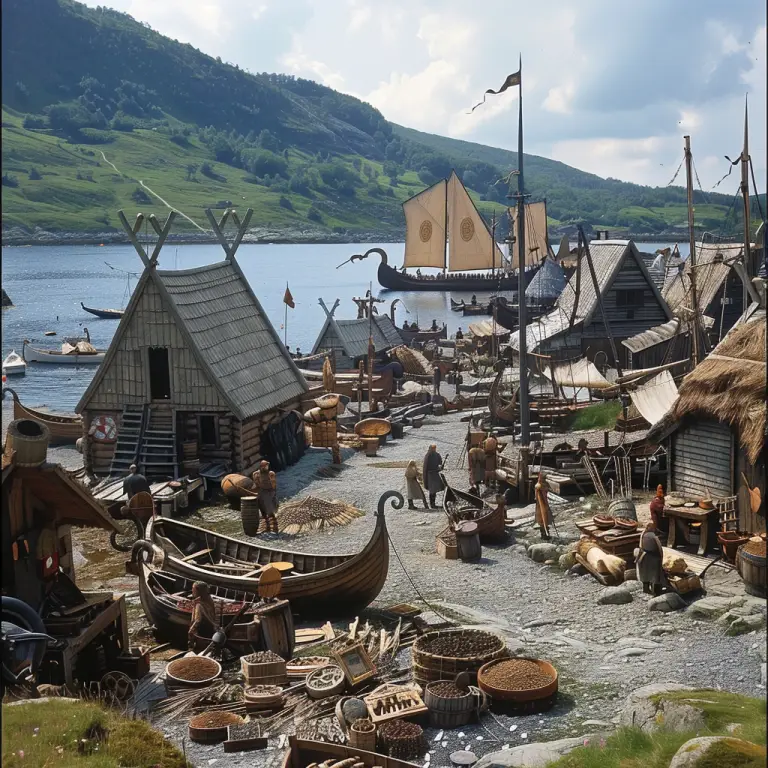Kaupang, located in southern Norway near present-day Larvik, was a significant Viking Age settlement and one of the earliest known towns in Norway. Its name, which means “marketplace” in Old Norse, highlights its role as a central hub for trade and commerce during the 8th and 9th centuries.
Early Viking Town: Kaupang was established around 800 AD and is considered Norway’s first urban settlement. Its primary function was as a trading centre, where merchants and craftsmen gathered to exchange goods and services.
Strategic Location: Situated along the Skagerrak strait, Kaupang provided easy access to maritime trade routes connecting Norway to other parts of Scandinavia, the British Isles, and the European continent. Its coastal location made it a vital link in the Viking trading network.
Trade and Commerce:
Kaupang was a bustling marketplace where goods like furs, amber, iron, and soapstone were traded.
Imported luxury goods, such as glassware, jewellery, and coins from the Middle East, Europe, and the Byzantine Empire, were also found here, indicating the settlement’s role in international trade.
Craftsmen in Kaupang produced items like metal tools, weapons, and intricate jewellery.
Archaeological Significance:
Excavations have uncovered evidence of permanent buildings, streets, and workshops, showing that Kaupang was not just a seasonal market but a year-round settlement.
Numerous artifacts, including silver coins, scales for weighing goods, and remnants of longhouses, provide a glimpse into the daily lives of its inhabitants.
Burial sites near Kaupang reveal the wealth and status of some residents, with elaborate grave goods that include weapons, tools, and imported luxury items.
Cultural Exchange: The artifacts found at Kaupang reflect its role as a melting pot of cultures. Traders and settlers from across the Viking world and beyond brought diverse goods and ideas, contributing to the settlement’s cosmopolitan character.
Decline: By the late 9th or early 10th century, Kaupang began to decline. This may have been due to shifts in trade routes, political changes, or competition from other emerging trade centres.
Kaupang in Viking Society
Kaupang is emblematic of the transition from a predominantly rural, agrarian society to one with emerging urban centres in Scandinavia during the Viking Age. It highlights the Vikings’ role not only as raiders but also as skilled traders and artisans deeply connected to the global economy of their time.
Kaupang Today
Today, the site of Kaupang is an important archaeological location and a destination for those interested in Viking history. Excavations continue to provide new insights into the settlement’s layout, economy, and culture. Visitors can explore the site and learn about its history through exhibitions and reconstructions of Viking life.



